The Triumph of Mahakumbh : A Saga of Faith, Unity, and Progress
The Mahakumbh’s infrastructure now serves as permanent assets. The expanded airport and highways will boost trade, while the eco-friendly waste model is being replicated in other states. Uttar Pradesh’s tourism revenue is projected to grow by 25% annually, with Prayagraj emerging as a global spiritual hub.
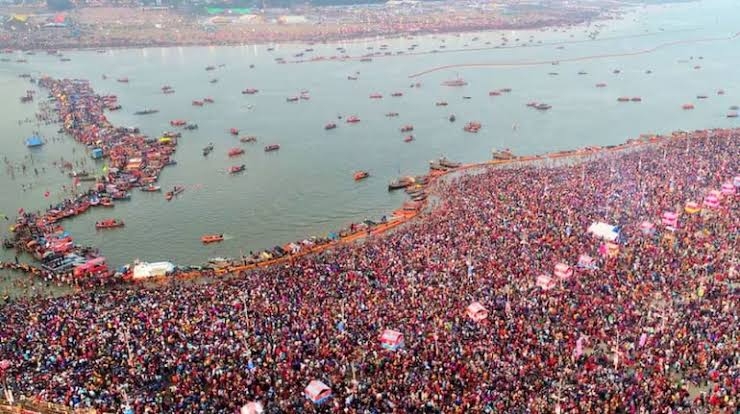
The Prayagraj Mahakumbh 2025 will be remembered as a watershed moment in India’s cultural and economic history. Held at the sacred confluence of the Ganges, Yamuna, and the Saraswati rivers, this 45-day spiritual extravaganza attracted over 660 million devotees, pilgrims, and tourists from across the globe.
Beyond its spiritual grandeur, the kumbh-mela showcased India’s organizational prowess, transformed local economies, and set new benchmarks for large-scale event management.
Historical and Cultural Significance: The Soul of Mahakumbh
The Kumbh Mela, rooted in Hindu culture, is a celebration of the cosmic battle between Devtas and Asurs over the nectar of immortality. Prayagraj holds the largest and most revered Kumbh, occurring every 12 years. The 2025 edition, however, was extraordinary.
It coincided with a rare planetary alignment, making it a "Maha" (great) Kumbh, amplifying its spiritual significance. For millions, the ritual bath (Amrit Snan) during this period is believed to cleanse sins and grant liberation.
The event saw participation from all 13 traditional Akharas, including the Naga Sadhus, whose processions captivated onlookers with their austere devotion.
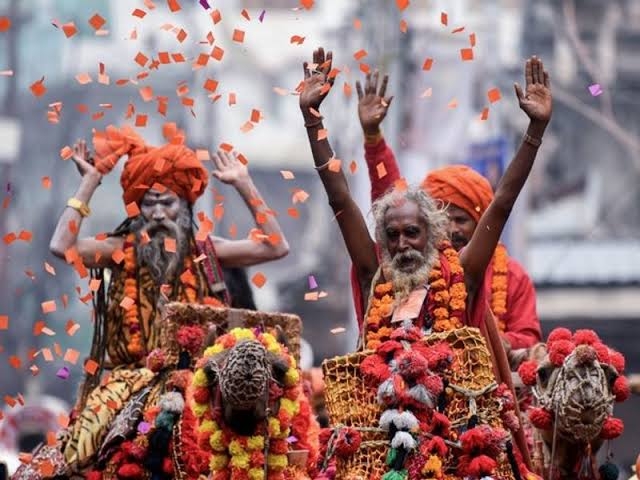
Preparations: A Symphony of Infrastructure and Innovation
The Uttar Pradesh government, in collaboration with the central government, began preparations three years in advance. A budget of thousands of crores was allocated for infrastructure, security, and public amenities. Key initiatives included:
Smart City Upgrades : Prayagraj’s roads were widened, and 500 km of temporary roads were laid using recycled plastic. Six new riverfront ghats were constructed, and 20 old ones were renovated to accommodate 5 million daily bathers.
Transport Revolution : The city’s railway station was expanded to handle 500,000 passengers daily. Over 1,000 special trains, including 200 “Kumbh Express” services, were introduced.
The Prayagraj International Airport added 50 new domestic and international flights, while 10,000 electric buses shuttled visitors between campsites and bathing zones.
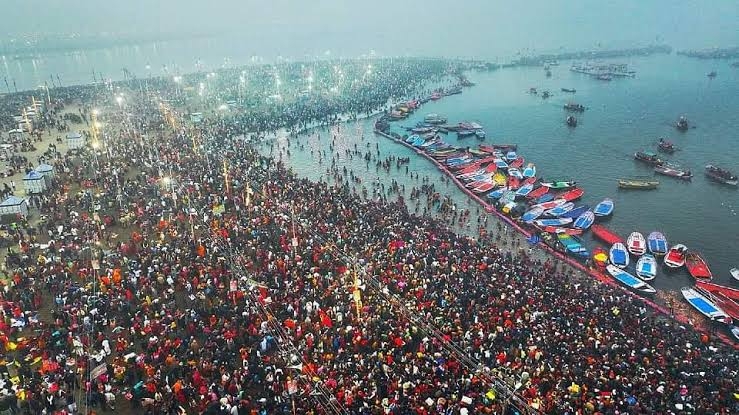
Tech-Driven Crowd Management : An AI-powered app, “Kumbh Tracker,” provided real-time updates on crowd density, weather, and lost persons. Drones monitored key areas, and 10,000 CCTV cameras ensured security across 3,200 hectares of the mela grounds.
Sustainable Sanitation : A workforce of 25,000 sanitation workers maintained 200,000 bio-toilets and 15 waste-to-energy plants, processing 3,000 metric tons of waste daily. The “Plastic-Free Kumbh” campaign eliminated single-use plastics, replacing them with biodegradable alternatives.
Economic Tsunami: Boosting Local and National Prosperity
The Mahakumbh 2025 injected an estimated more than ₹2 lakh crores into India’s economy, with Uttar Pradesh reaping the lion’s share. Key sectors flourished:
Hospitality Boom : All 85,000 hotel rooms in Prayagraj were booked months in advance, with luxury tents and Rudraksha-themed hotels charging up to ₹50,000 per night. Nearby cities like Varanasi and Ayodhya saw 90% occupancy, as pilgrims combined temple visits with the Kumbh.
The Kashi Vishwanath Dham in Varanasi reported a 300% surge in footfall, with its newly expanded corridors accommodating 1 lakh daily visitors.
Transportation Windfall : Airlines added 1,500 extra flights, while toll plazas on connecting highways collected ₹320 crores—a 400% increase from 2019. Boat operators along the Ganges earned ₹200 crores, offering sunrise dips and guided heritage tours.
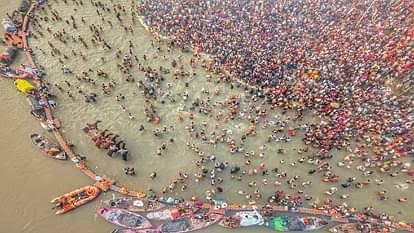
Artisan Revival : Over 500,000 local vendors sold items like rudraksha malas, brass idols, and silk saris. The UP Handloom Corporation reported ₹780 crores in sales, empowering rural weavers.
Employment Surge : Temporary jobs for 1.2 million people—from lifeguards to translators—were created, with wages rising by 30% due to high demand.
Temple Tourism: Spiritual Networks and Global Pilgrims
The Mahakumbh acted as a catalyst for India’s “spiritual economy.” Tour operators curated packages linking Prayagraj to Ayodhya’s Ram Mandir, Varanasi’s ghats, and Mathura’s Krishna temples.
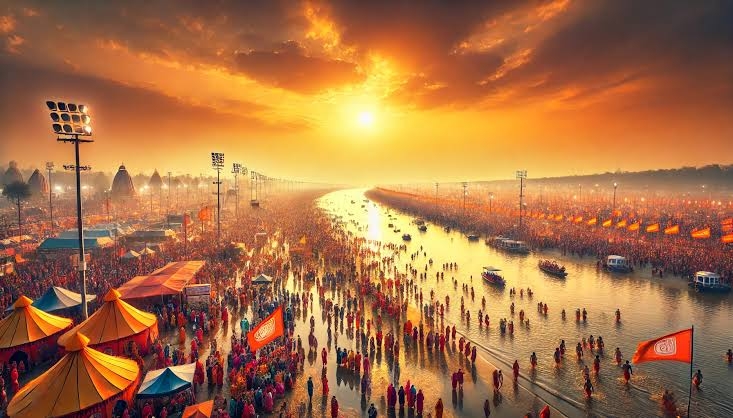
The “Divya Kashi Yatra” attracted 5 million foreign tourists, with yoga sessions, Ayurveda workshops, and Ganga Aarti ceremonies becoming Instagram sensations. The Rudraksha Convention Center in Varanasi hosted interfaith dialogues, while the Sarnath Buddhist circuit saw a 70% spike in visitors.
Unsung Heroes: The Workforce Behind the Miracle
The Kumbh’s success hinged on the tireless efforts of laborers, police, and volunteers. Over 50,000 construction workers toiled in shifts, braving winter nights to erect pontoon bridges and LED-lit camps. The government ensured their welfare through:
Healthcare : Mobile clinics provided free check-ups, and 10 temporary hospitals treated 12,000 workers for cold-related ailments.
Housing and Food : Heated tents and community kitchens served 500,000 meals daily, with menus tailored to regional preferences.
Financial Security : Direct wage transfers via Aadhaar-linked accounts eliminated middlemen, while accident insurance covered all workers.
Green Kumbh: Balancing Tradition and Ecology
Environmental sustainability was a cornerstone. Solar panels powered 80% of the event, and “Water ATMs” dispensed 20 million liters of purified Gangajal daily.
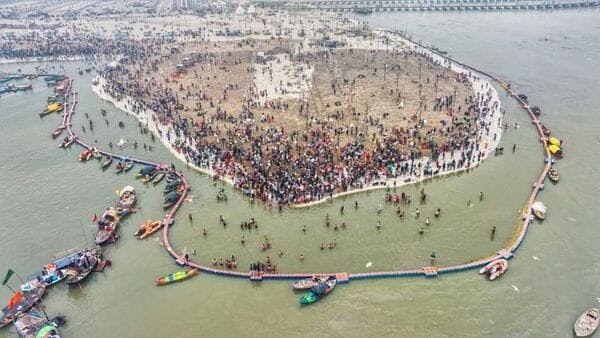
The “Namami Gange” initiative deepened the river’s channel by 3 meters, improving water flow. Post-event, 90% of temporary structures were recycled, and 500,000 saplings were planted to offset carbon emissions.
Legacy: A Blueprint for the Future
The Mahakumbh’s infrastructure now serves as permanent assets. The expanded airport and highways will boost trade, while the eco-friendly waste model is being replicated in other states. Uttar Pradesh’s tourism revenue is projected to grow by 25% annually, with Prayagraj emerging as a global spiritual hub.
Conclusion: A Nation’s Collective Triumph
The Prayagraj Mahakumbh 2025 was more than a pilgrimage—it was a testament to India’s ability to harmonize ancient traditions with modern innovation. By uplifting economies, fostering inclusivity, and honoring its environmental commitments, the event has etched itself into history as a beacon of hope and unity. As the sun set on the final Amrit Snan, the chants of “Har Har Gange” echoed not just for spiritual salvation, but for a brighter, collective future.


